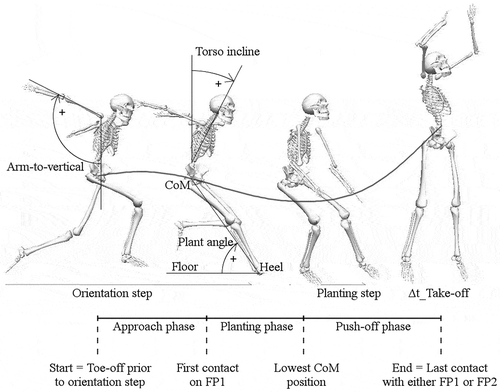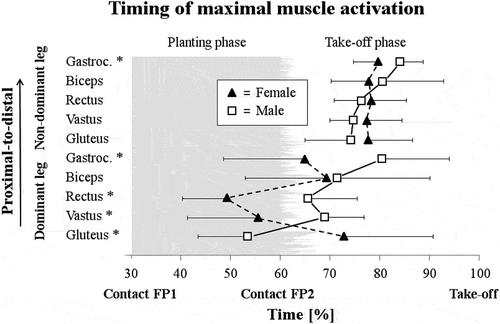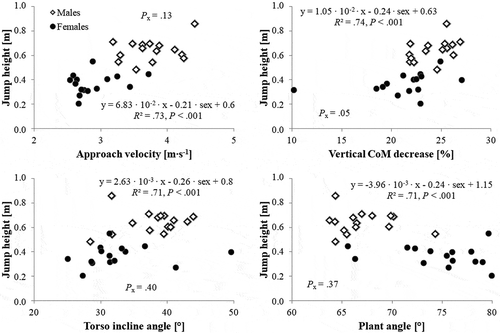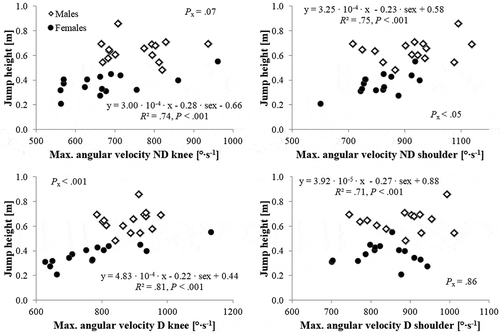Figures & data
Figure 1. Overall time-frame and definition of phases, terms, and angles relative to the vertical axis

Table 1. MANOVA and ANOVA results for females and males. Values are mean ± SD
Figure 2. Mean female and male values for maximal muscle activation of lower extremity muscles of the dominant and non-dominant side

Table 2. Correlation of secondary variables. The selection includes variables related to biomechanical key aspects for the performance: approach, velocity transfer, upper body lean and arm swing
Figure 3. Multivariate regression analyses between jump height and approach velocity, vertical CoM decrease, torso incline, and plant angle, including sex as control variable

Figure 4. Multivariate regression analyses between jump height and maximal angular velocity of dominant and non-dominant knees and shoulders, including sex as control variable

